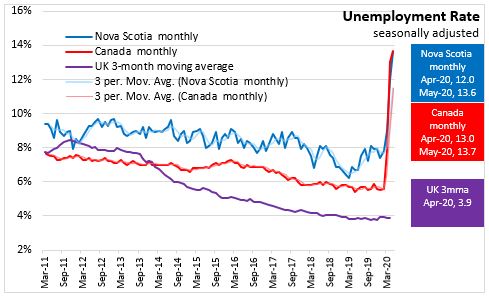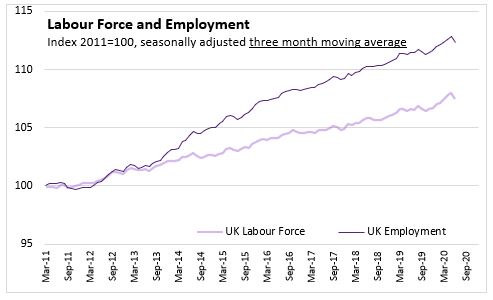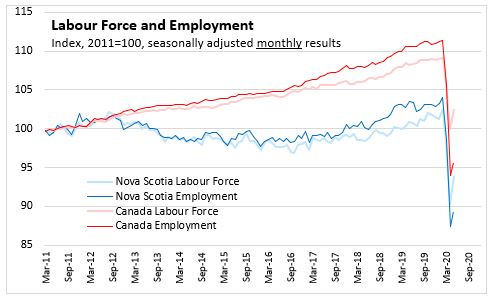The Economics and Statistics Division maintains archives of previous publications for accountability purposes, but makes no updates to keep these documents current with the latest data revisions from Statistics Canada. As a result, information in older documents may not be accurate. Please exercise caution when referring to older documents. For the latest information and historical data, please contact the individual listed to the right.
<--- Return to Archive
For additional information relating to this article, please contact:
June 16, 2020UK LABOUR FORCE SURVEY, FEBRUARY 2020 TO APRIL 2020 
The UK Office for National Statistics (ONS) reported today that the unemployment rate for the three-month period February 2020 to April 2020 averaged 3.9 per cent, remained same from previous estimates. Over the last seven years, there has been a steady decline in the UK unemployment rate, falling to lows not seen since 1974.
The UK employment rate among those aged 16-64 averaged 76.4 per cent from February to April, slightly down from previous estimates.
Data from February-April 2020 are the period during which the COVID-19 has relatively no effect on the UK labour market. The timeframe does not reflect the full impact of COVID-19 response measures as lockdown started on March 23. However, COVID-19 has impacted on actual hours worked and vacancy levels. For full-time and part-time workers, average actual weekly hours worked had the largest falls to record lows. The largest quarterly decrease to the vacancies total since the data time series started in 2001 took place in March to May 2020. Experimental monthly estimates of paid employees and their pay from HM Revenue and Customs' (HMRC's) Pay As You Earn (PAYE) Real Time Information (RTI) data shows that the number of paid employees fell by 612,000 between March 2020 and May 2020.
The ONS Business Impact of Coronavirus (COVID-19) Survey (BICS) Waves 2 to 5 panel for the period 23 March to 17 May 2020 showed that the expected workforce size has varied across each wave. The firms which were still trading, the proportion that expected a reduction in their workforce size decreased from 30 per cent in Wave 2 to 9 per cent in Wave 5.
The growth of total and regular average weekly earnings slowed to 1.0 per cent and 1.7 per cent respectively in the three months to April 2020.
Since 2011-2012, employment in the UK has grown faster than the size of the labour force. The impact of COVID-19 is clearly apparent in falling employment and labour force in Canada and Nova Scotia for April 2020 and started to rebound in May 2020.


Sources: UK Office for National Statistics: Labour Market Overview
Statistics Canada Table 14-10-0287-02 Labour force characteristics by age group, monthly, seasonally adjusted
<--- Return to Archive